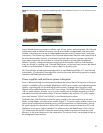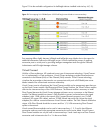
Figure 7. HP BladeSystem c3000 Enclosure supports up to six power supplies
The new, high efficiency HP c3000 power supplies provide greater than 90 percent efficiency in AC
to DC conversion. These power supplies use the ProLiant universal form factor so they can also be
used in other ProLiant servers. Each AC power supply ships with a standard power distribution unit
(PDU) power cord (C13 to C14 ). By purchasing proper wall outlet cords, users can connect the
power supplies to standard wall outlets.
NOTE
Wall outlet power cords should only be used with low-line
(100 to 120 VAC) power sources. If high-line (200 to 240
VAC) power outlets are required, safety regulations require the
use of a PDU or a UPS between the c3000 Enclosure power
supplies and wall outlets.
The enclosure can contain up to six 1200-watt self-cooled power supplies. A pair of PDUs is required
for AC line redundancy. A variety of PDUs can be chosen, as indicated in the c3000 QuickSpecs
available at this URL:
http://h18004.www1.hp.com/products/quickspecs/12790_div/12790_div.html. The
HP BladeSystem Power Sizer should be used to size the PDU appropriately for the c3000 storage and
server configuration.
HP expects that in the markets targeted for the c3000 Enclosure (midmarket and remote sites), the
c3000 will be connected to an uninterruptible power supply (UPS) for power backup instead of to a
PDU. Use the HP BladeSystem Power Sizer to determine the UPS capacity requirement.
NOTE
The rack-mountable HP R5500 UPS (5000VA/4500 watts)
supports four power supplies in the power supply redundant
(N+1) power mode.
HP BladeSystem Power Sizer
The HP BladeSystem Power Sizer is a tool that assists facilities teams and IT staff in sizing their power
and cooling infrastructure to meet the needs of an HP BladeSystem solution. The BladeSystem Power
Sizer is based on actual component-level power measurements of a system stressed to maximum
capability. The sizer allows a customer to select the type and number of components within each
server blade and enclosure and to see the effect of changes on power consumption and heat
loading.
9


















